Marks & Spencer fashion: From Twiggy to Alexa Chung
- Published
Is Marks & Spencer the High Street's equivalent of Marmite? Its clothing certainly divides opinion.
Some people think of it as somewhere only their mum or gran shops, while others can't wait to check out the latest Alexa Chung collection. Remember all the fuss around THAT skirt?
As new M&S boss Steve Rowe prepares to unveil his plans to tackle falling clothing sales on Wednesday, we asked Sandra Halliday, fashion expert and founder of the blog trendwalk.net, external, to look back over the years and see when M&S has been a trendsetter and when it has fallen behind the fashion curve.
1932
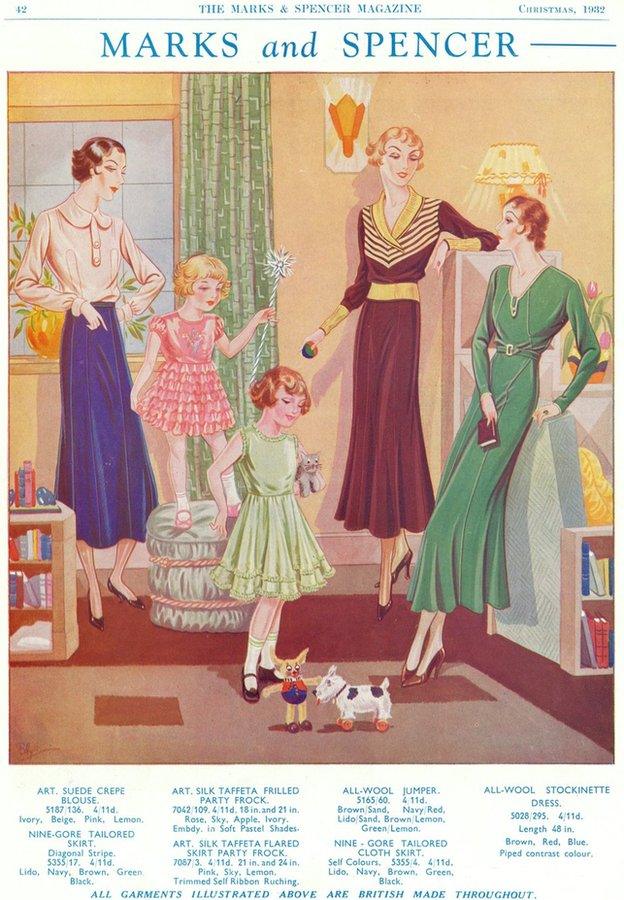
These are very much typical looks of their time, neither behind the curve nor ahead of it but actually exactly on target. 1930 saw a radical silhouette change after the loose cuts of the 20s and by 1932 the fitted-but-fluid shapes and longer skirts were completely mainstream.
1950s
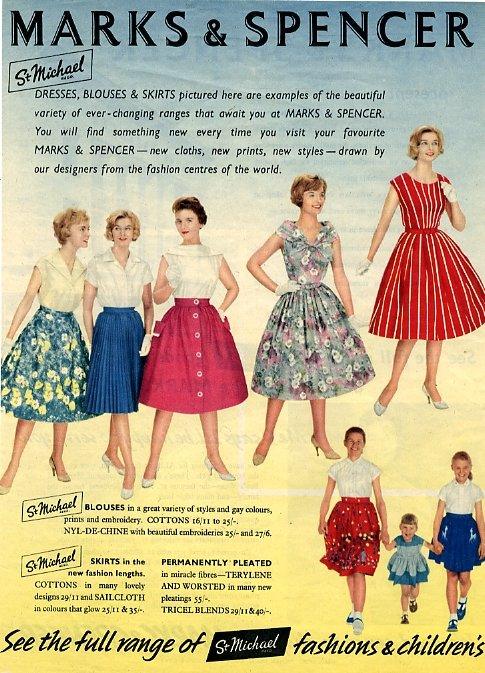
These skirts were the skinny jeans equivalent of that decade and lasted a surprisingly long time into the early 60s. M&S was taking no risks whatsoever here and could probably be confident that they'd sell thousands upon thousands of this look for summer daytime dressing. It's very much a reflection of M&S targeting the "average" woman with a safe item that was easy to produce rather than experimenting with the sack dress, the trapeze line or puffball skirts that were popular at the higher end.
1967
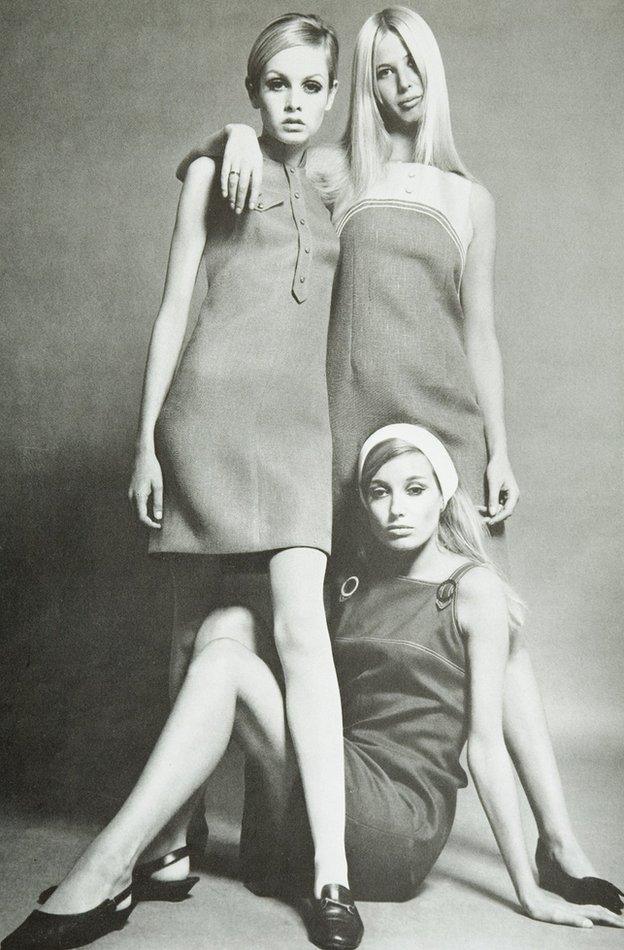
Another example of M&S tapping into the dominant mainstream look (at least among the under-35s). Like the full skirt of the previous decade, this shape lasted for years and was constantly tweaked. While many people remember 1967 for the "Summer of Love" and the way it embraced hippie looks, this is, again, targeting "everywoman", the people who worked in offices, shops and so on for whom patched jeans or a kaftan were dangerously subversive! But there is innovation going on here. Twiggy (left) was the model of the moment with a haircut and body shape that was very untraditional. It set a template for M&S's marketing of its products that was very directional, even if the fashion itself was mainstream.
1972
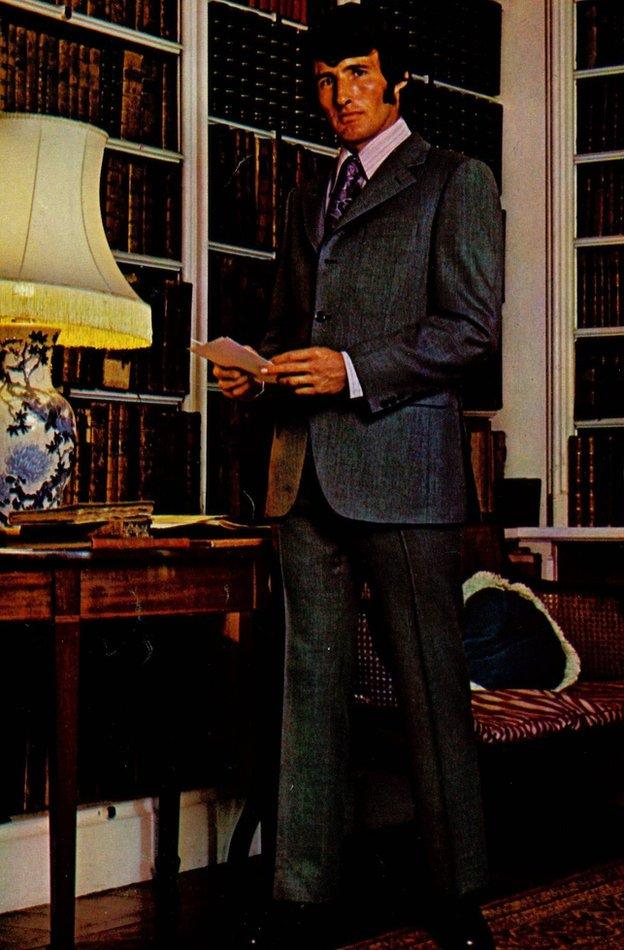
Given that this was the year of David Bowie, Glam Rock, Led Zeppelin and the like, this is very conservative up to a point and represents a certain kind of customer. Think of Whatever Happened to the Likely Lads?, which was being filmed during 1972. A character like Terry was still dressing for the 1960s but the Bob character was the prototype yuppie and wanted a suit to reflect that with slightly wider lapels, gently flared trousers and a shirt that wasn't regulation white.
Again, the innovation here might have been less about shape and more about the "back story". M&S has always been at the forefront of using new materials, and styles like this suit, shirt and tie would most likely have had easy-care features using advanced synthetic materials in conjunction with natural fibres.
1983

M&S was riding high in 1983 and while it was never a fashion beacon, it was still attracting a good cross-section of the population. This look is very mainstream - the Princess Diana-influenced flat shoes, the "mini" skirt that's not too short, the Dexy's Midnight Runners-style dungarees that by now had been around for a few years so no longer seemed unusual. This would have appealed to the woman in the street who wanted to tap into fashion trends very gently with clothes that she knew were good quality.
But it wouldn't really have appealed to fashion forward customers - they were too busy wearing Bodymap and Jean Paul Gaultier. Not that M&S couldn't have done high fashion. The chain had some superb designers at this time but its customer didn't want to be challenged, they wanted clothes that looked and felt good and that they knew would work for their lives.
1996
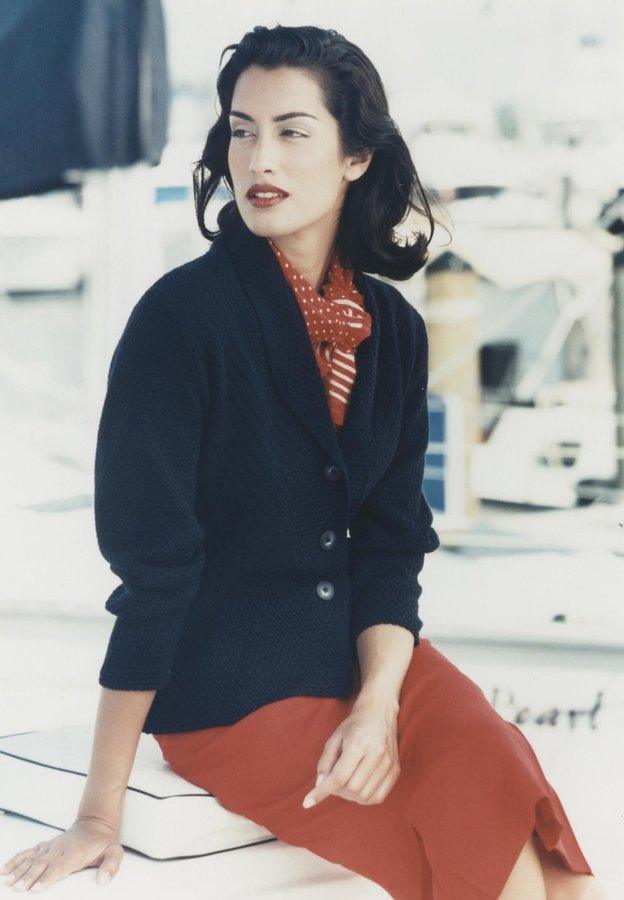
This was just a few years before M&S faced a perfect storm as fast fashion began to undermine its dominance. I think by the 90s it was quite complacent as it knew it had a devoted mainstream following who weren't about to defect to anything else on the High Street. This look sums that up. It's nice enough but given that a whole year earlier fashion had been shaken up by Tom Ford's 70s-influenced styling at Gucci and that Prada was starting to get into high gear, it's really very dull!
It's worth pointing out, though, that at the same time M&S was powering ahead in its food business and was innovating all over the place in terns of customer service, recipes and ingredients. That spirit of innovation didn't filter through to fashion, apart from in materials where it was an early user of innovative stretch fabrics. But that's because its typical customer at the time didn't want innovation. She might have wanted to experiment in the kitchen, but not with her wardrobe!
2006
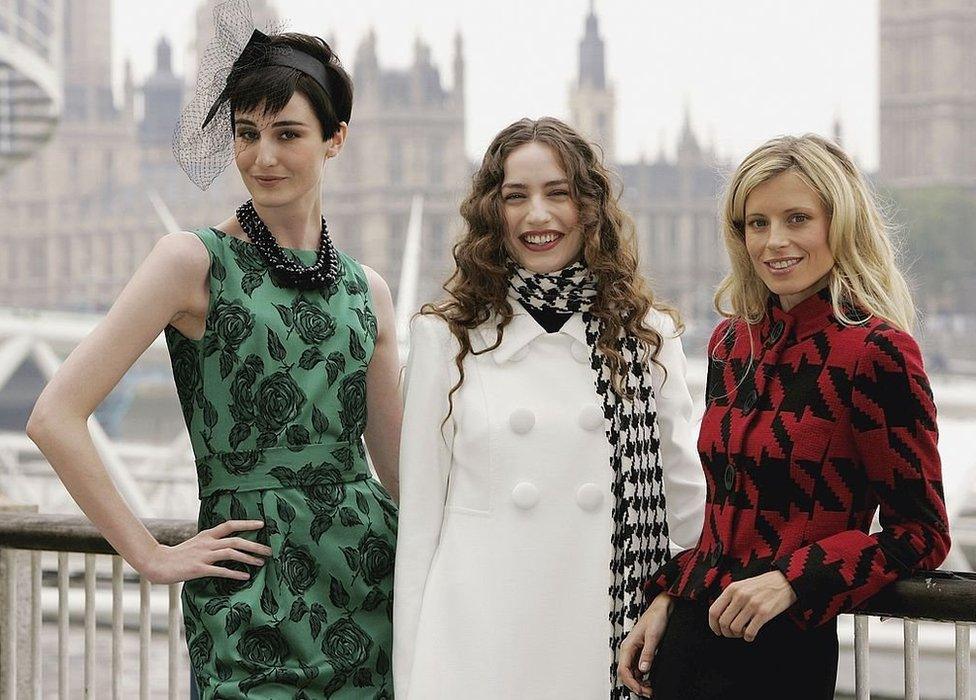
This was the height of M&S's obsession with celebrity models and the looks here reflect its fashion approach at the time. It mixed very commercial looks with some stronger trend pieces and while it didn't always get the balance right, it was actually turning out some very strong designs at this point.
2016
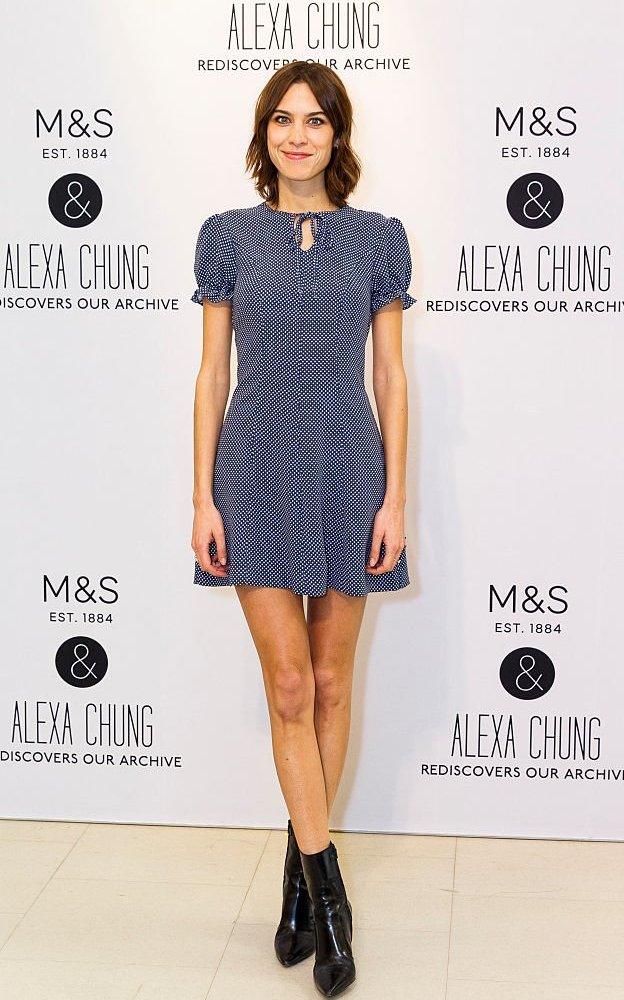
The company still faces enormous challenges in that it has to be all things to all people and it can't afford to appeal to niches. It has to reach mainstream consumers. The recent Alexa Chung collection was an interesting one. Personally I wasn't overly-impressed, but the social media chatter around it was very positive and certain items seemed to sell out online very fast. While it was billed as being an "archive" collection, it was really a mix of straight replications and re-interpretations (like this dress that was based on a 1960s original).
I'm interested to see what they do with Alexa next. M&S really needs to turn its clothing offer around as it's so important to it. It may be doing well in foods but clothing is a higher-margin business so is crucial. It has a big challenge because its business model of a giant single-brand operation targeting so many different customers is one that struggles in the modern world where online stores, ultra-fast fashion and luxury are the headline-grabbers.
Sandra Halliday is a fashion expert and founder of the blog trendwalk.net, external
- Published7 January 2016
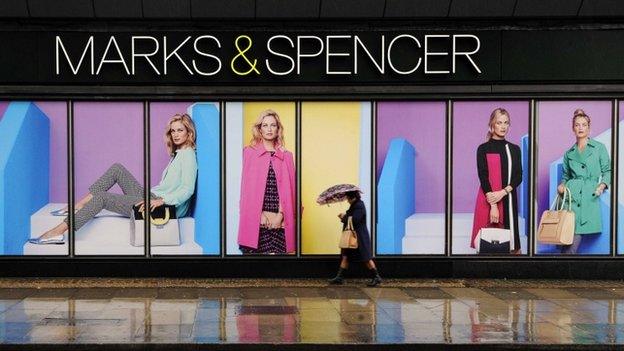
- Published20 May 2015
